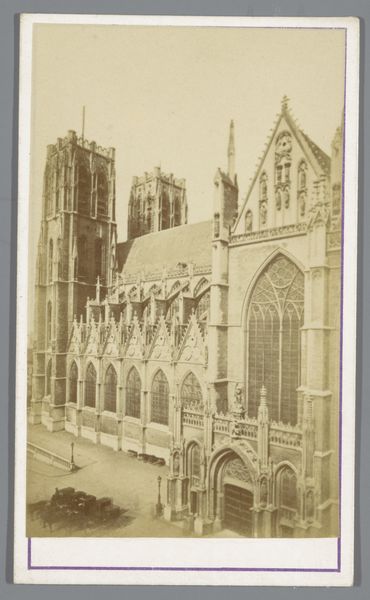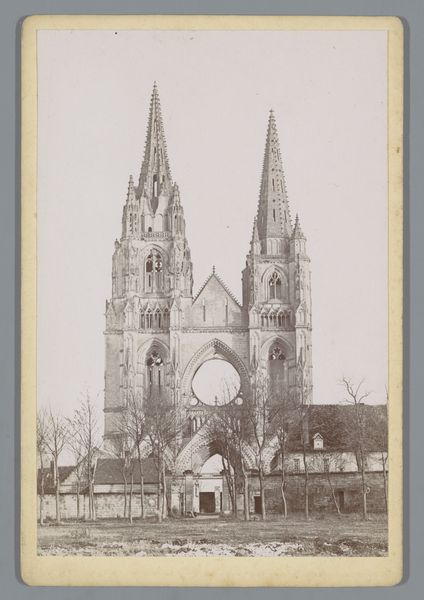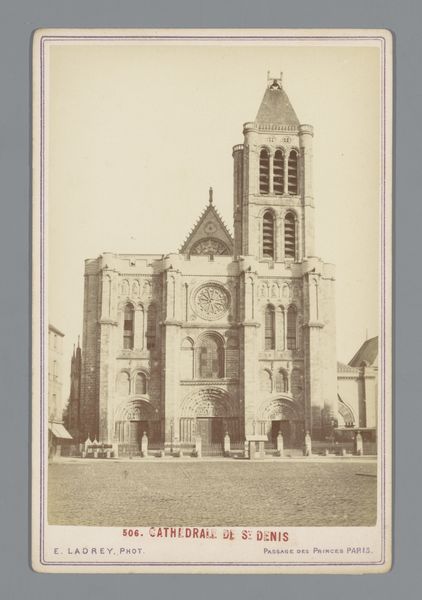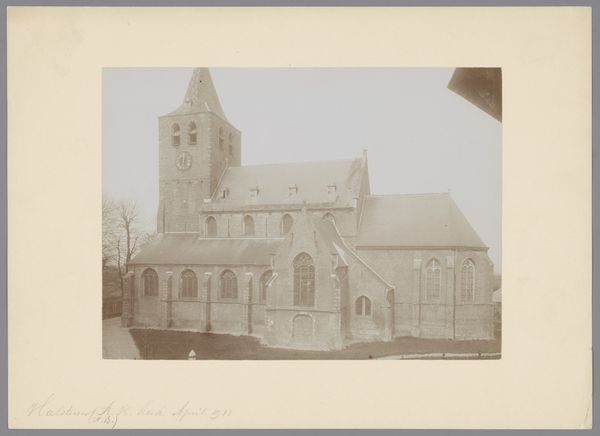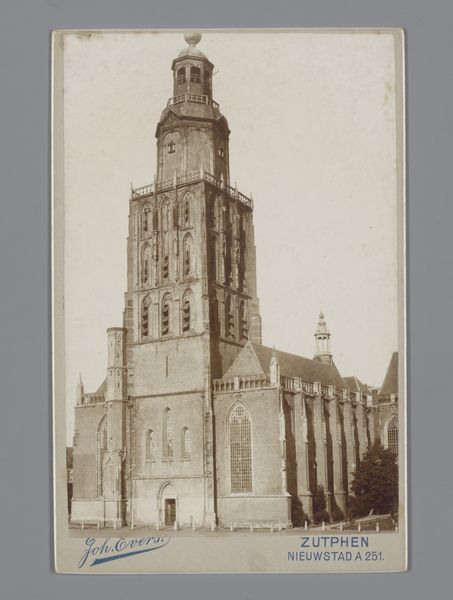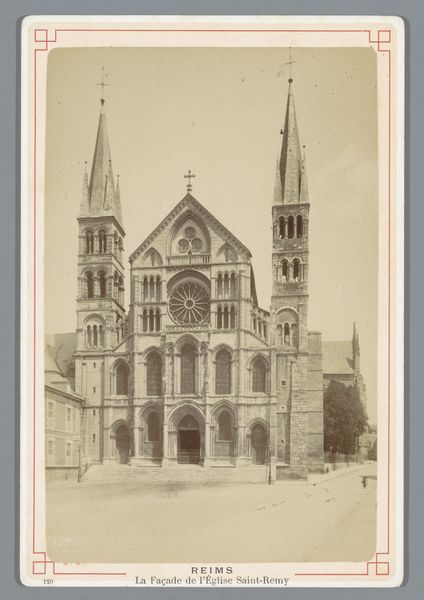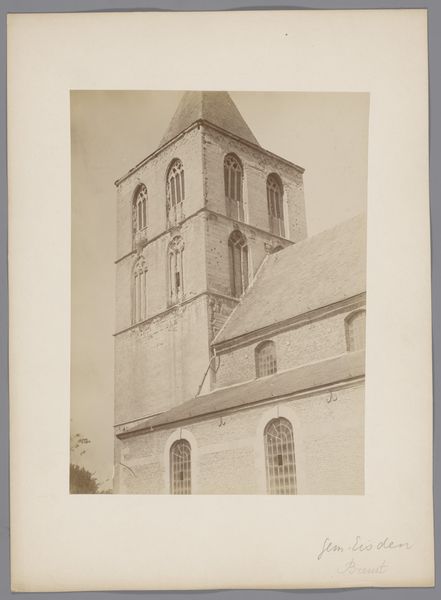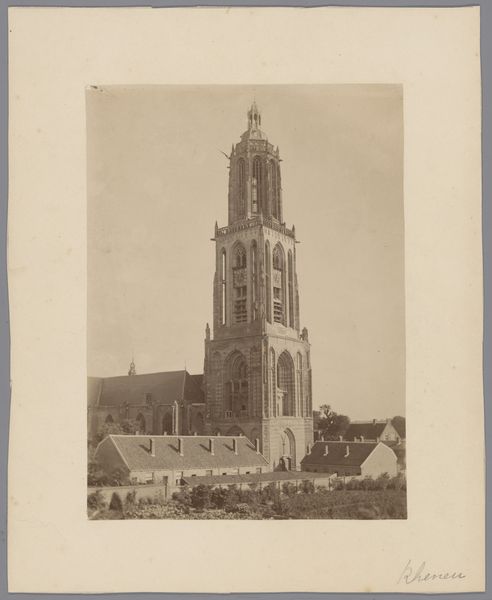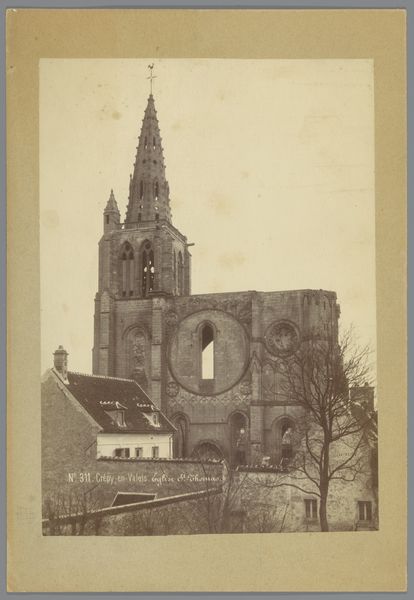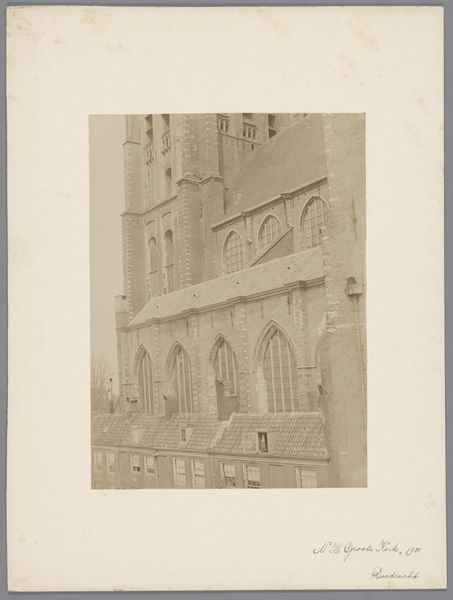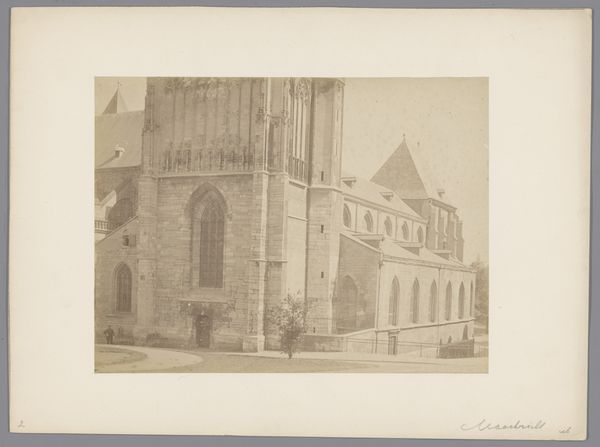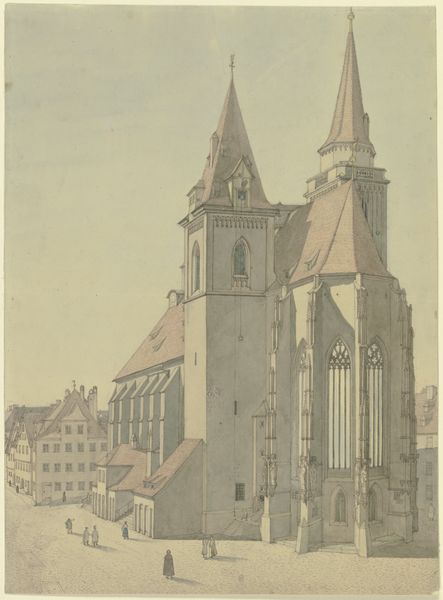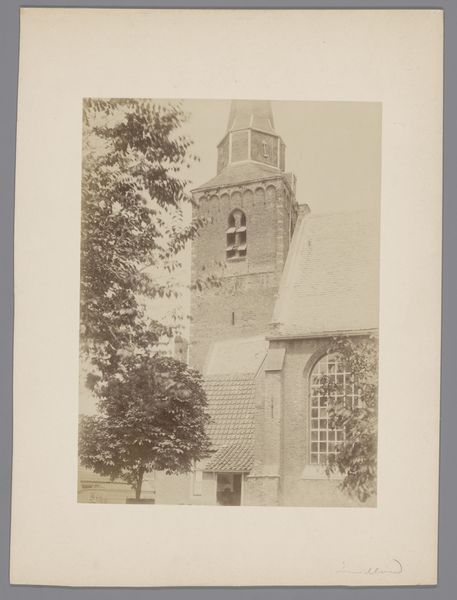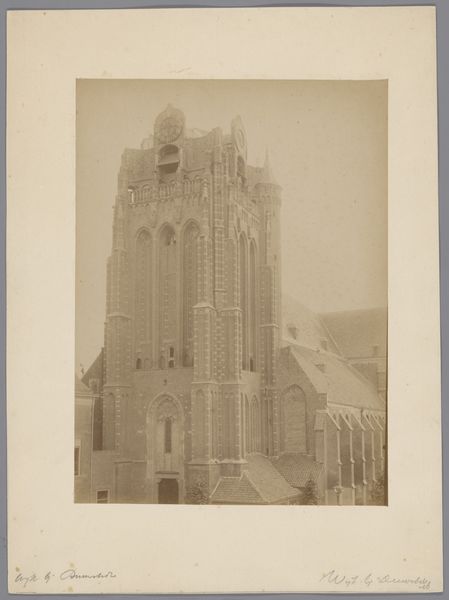
print, photography, architecture
# print
#
photography
#
cityscape
#
architecture
Dimensions: height 105 mm, width 64 mm
Copyright: Rijks Museum: Open Domain
Curator: This intriguing piece, "Onze-Lieve-Vrouwekerk in Münster, Duitsland", created sometime between 1885 and 1908, is an interesting example of period photography and printmaking, brought together to create a cityscape. Editor: Wow, that church looks so...imposing. The height and the stark tones make it feel like it's judging me somehow. Makes you wonder what secrets are locked inside those walls. Curator: Absolutely, that visual tension is really powerful. Considering its historical context, these kinds of architectural images gained prominence alongside movements for urban reform and preservation, especially when religion intersected with state authority. It prompts reflection on power dynamics embedded in the built environment. Who gets to build these monuments, and who are they meant to impress? Editor: You're so right. Thinking about who *built* that and under what conditions shifts the perspective entirely. It makes me question my own role in perpetuating the systems that created that power imbalance. On the technical side, the perspective flattens, which almost enhances the intimidating scale you mentioned. Did you see how the bare trees sort of claw at the base? Curator: Precisely, and those bare trees frame a space laden with latent meaning and historical weight, reminding me of how deeply landscapes themselves carry memories of human endeavor. This artwork not only portrays a physical space but also opens discussions regarding representation, social memory, and agency through a kind of silent storytelling. Editor: That’s it. “Silent storytelling”--beautiful. Well, this picture is sure rattling my perceptions. Think I need a nice, level horizon now—maybe with a margarita in front. Curator: (Laughing) A well-deserved existential break! This piece really highlights how crucial it is to interrogate the layers beneath seemingly objective representations and to ask critical questions.
Comments
No comments
Be the first to comment and join the conversation on the ultimate creative platform.
